Conoclinium greggii, Palmleaf Thoroughwort
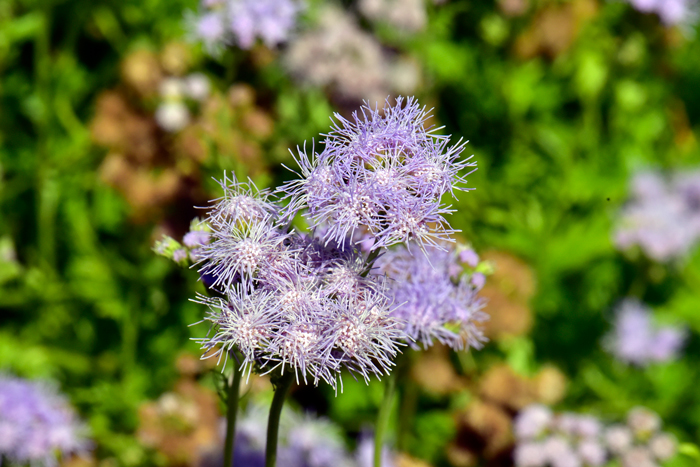
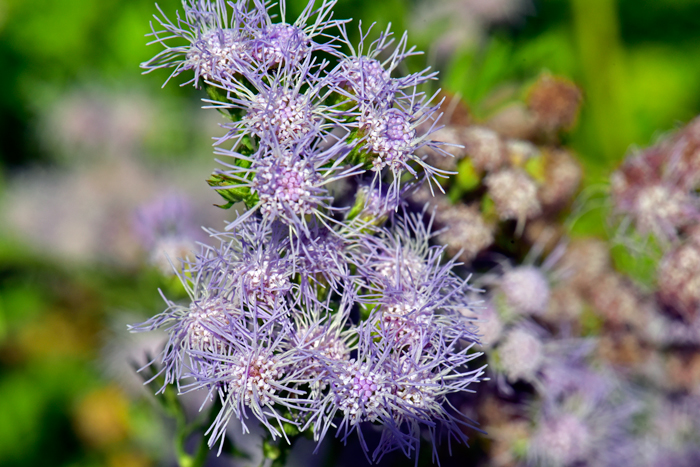
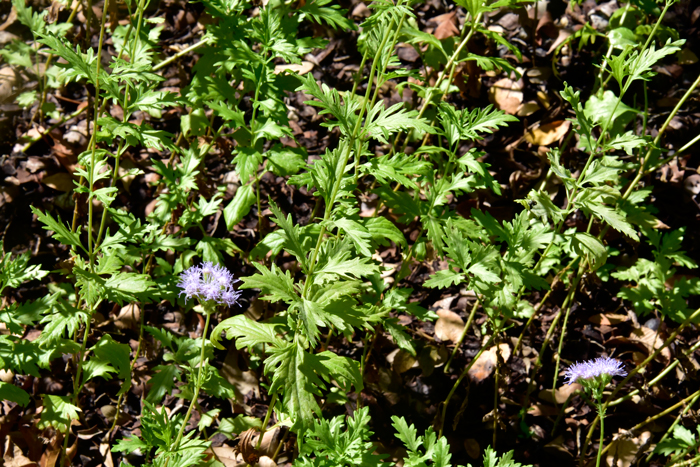
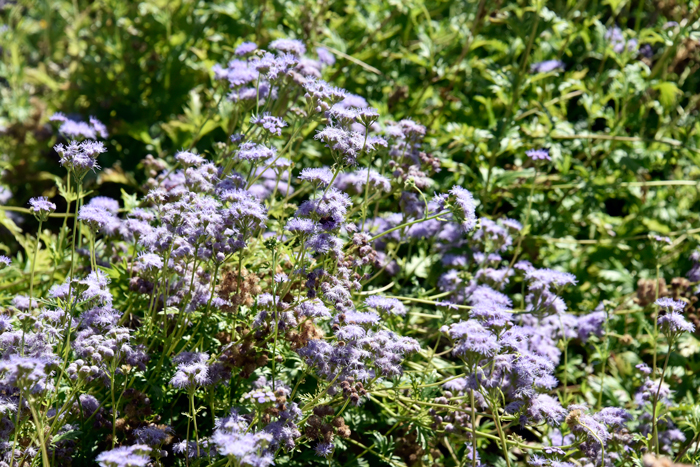
Scientific Name: Conoclinium greggii
Common Name: Palmleaf Thoroughwort
Also Called: Gregg's Mistflower, Palm-leaf Mistflower, Palm-leaf Thoroughwort, Pinked Mistflower, Purple Palmleaf Mistflower, Purple Palmleaf Eupatorium
Family: Asteraceae, Sunflower Family
Synonyms: (Conoclinium dissectum, Eupatorium dissectum, Eupatorium greggii)
Status: Native
Duration: Perennial
Size: Up to 2 feet (61 cm)
Growth Form: Forb/herb; rhizomatus often forming knotty crowns; stems glabrous, plants erect, ascending or decumbent.
Leaves: Green, leaves ovate-deltate to ovate; palmate, deeply divided into 3 lobes and the lobes are again pinnately dissected.
Flower Color: Blue, purplish-blue, lavender or purple; the “flowers” are many floral heads clustered together; the tiny florets have thread-like stigmas; fruit is a cypsela.
Flowering Season: April to August; again October to November
Elevation: 1,500 to 5,000 feet (457-1,524 m).
Habitat Preferences: Variable across wide geographic range, stream beds and other waterways such as washes and ditches; plains and mesas; sandy, clay or limestone soils, rocky soil; mesquite and creosote bush-mesquite communities.
Recorded Range: Conoclinium greggii is relatively rare in the United States where it is found only in western Texas, southern New Mexico to southern Arizona. It is also native southward to Mexico (Chihuahua, Coahuila, Durango, Nuevo León, San Luis Potosí, Sonora, Zacatecas).
North America & US County Distribution Map for Conoclinium greggii.
North America species range map for Conoclinium greggii:
North American range map courtesy of Virginia Tech, Dept. of Forest Resources & Environmental Conservation
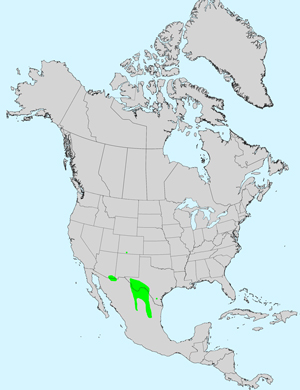
U.S. Weed Information: Unknown
Invasive/Noxious Weed Information: Unknown
Threatened/Endangered Information: Unknown
Wetland Indicator: In North America Conoclinium greggii has the following wetland designations:
FACU = Facultative Upland, usually occur in non-wetlands, but may occur in wetlands
Genus Information: In North America there are 3 species and 5 accepted taxa overall for Conoclinium. Worldwide, The Plant List includes 4 accepted species names and a further 14 scientific names of infraspecific rank for the genus Conoclinium.
The genus Conoclinium was previously classified as belonging to the genus Eupatorium; continued researched revealed that this genus is acutally closer related to the genus Ageratum.
In the Southwestern United States: Arizona and New Mexico each have 1 species of Conoclinium, California, Nevada and Utah have 0 species and Texas has 3 species. All data approximate and subject to revision.
Plants of the genus Conoclinium were previously classified as Eupatorium, however later research finds that they are more closely related to other plants of the genus Ageratum and Ageratina. This species is similar in flower to its distant relative, Fragrant Snakeroot, Ageratina herbacea.
To find out more about Butterflies and Moths of North America visit BAMONA.
For excellent information on vertebrate conservation visit The Xerces Society.
The genus Conoclinium was previously classified as belonging to the genus Eupatorium; continued researched revealed that this genus is acutally closer related to the genus Ageratum.
The species epithet "greggii" is named in honor of Josiah Gregg, (1806-1850).

